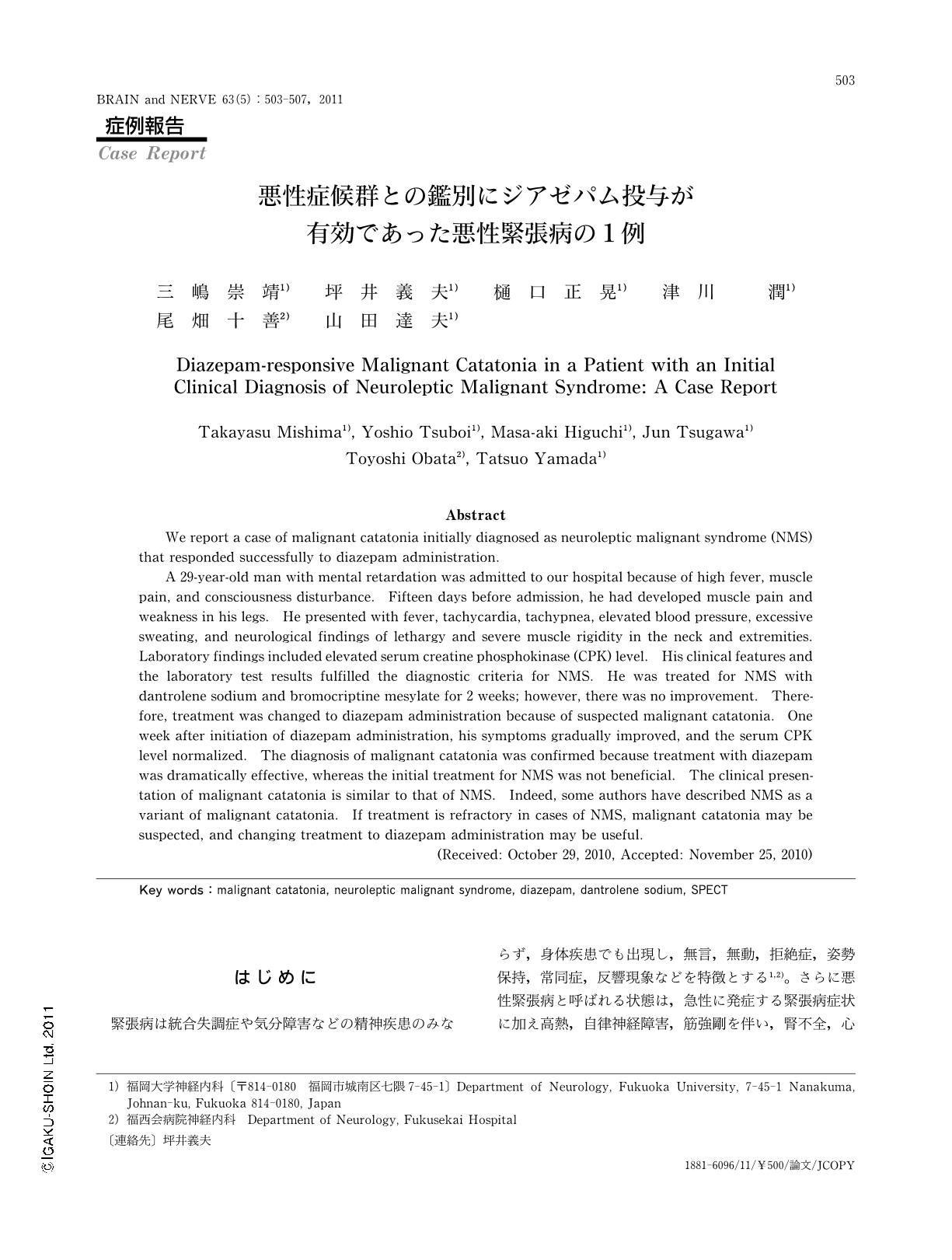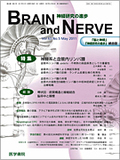Japanese
English
- 有料閲覧
- Abstract 文献概要
- 1ページ目 Look Inside
- 参考文献 Reference
はじめに
緊張病は統合失調症や気分障害などの精神疾患のみならず,身体疾患でも出現し,無言,無動,拒絶症,姿勢保持,常同症,反響現象などを特徴とする1,2)。さらに悪性緊張病と呼ばれる状態は,急性に発症する緊張病症状に加え高熱,自律神経障害,筋強剛を伴い,腎不全,心血管塞栓などが原因で時に死に至ることもある重篤な病態であることが知られている。
また,悪性緊張病は臨床症状が悪性症候群と類似しており,鑑別が困難な場合がある。今回,遷延性の経過を呈し,悪性症候群との鑑別に難渋し,ジアゼパムが著効したことから悪性緊張病と診断した症例を経験したので報告する。
Abstract
We report a case of malignant catatonia initially diagnosed as neuroleptic malignant syndrome (NMS) that responded successfully to diazepam administration.
A 29-year-old man with mental retardation was admitted to our hospital because of high fever, muscle pain, and consciousness disturbance. Fifteen days before admission, he had developed muscle pain and weakness in his legs. He presented with fever, tachycardia, tachypnea, elevated blood pressure, excessive sweating, and neurological findings of lethargy and severe muscle rigidity in the neck and extremities. Laboratory findings included elevated serum creatine phosphokinase (CPK) level. His clinical features and the laboratory test results fulfilled the diagnostic criteria for NMS. He was treated for NMS with dantrolene sodium and bromocriptine mesylate for 2 weeks; however, there was no improvement. Therefore, treatment was changed to diazepam administration because of suspected malignant catatonia. One week after initiation of diazepam administration, his symptoms gradually improved, and the serum CPK level normalized. The diagnosis of malignant catatonia was confirmed because treatment with diazepam was dramatically effective, whereas the initial treatment for NMS was not beneficial. The clinical presentation of malignant catatonia is similar to that of NMS. Indeed, some authors have described NMS as a variant of malignant catatonia. If treatment is refractory in cases of NMS, malignant catatonia may be suspected, and changing treatment to diazepam administration may be useful.
(Received: October 29,2010,Accepted: November 25,2010)

Copyright © 2011, Igaku-Shoin Ltd. All rights reserved.


